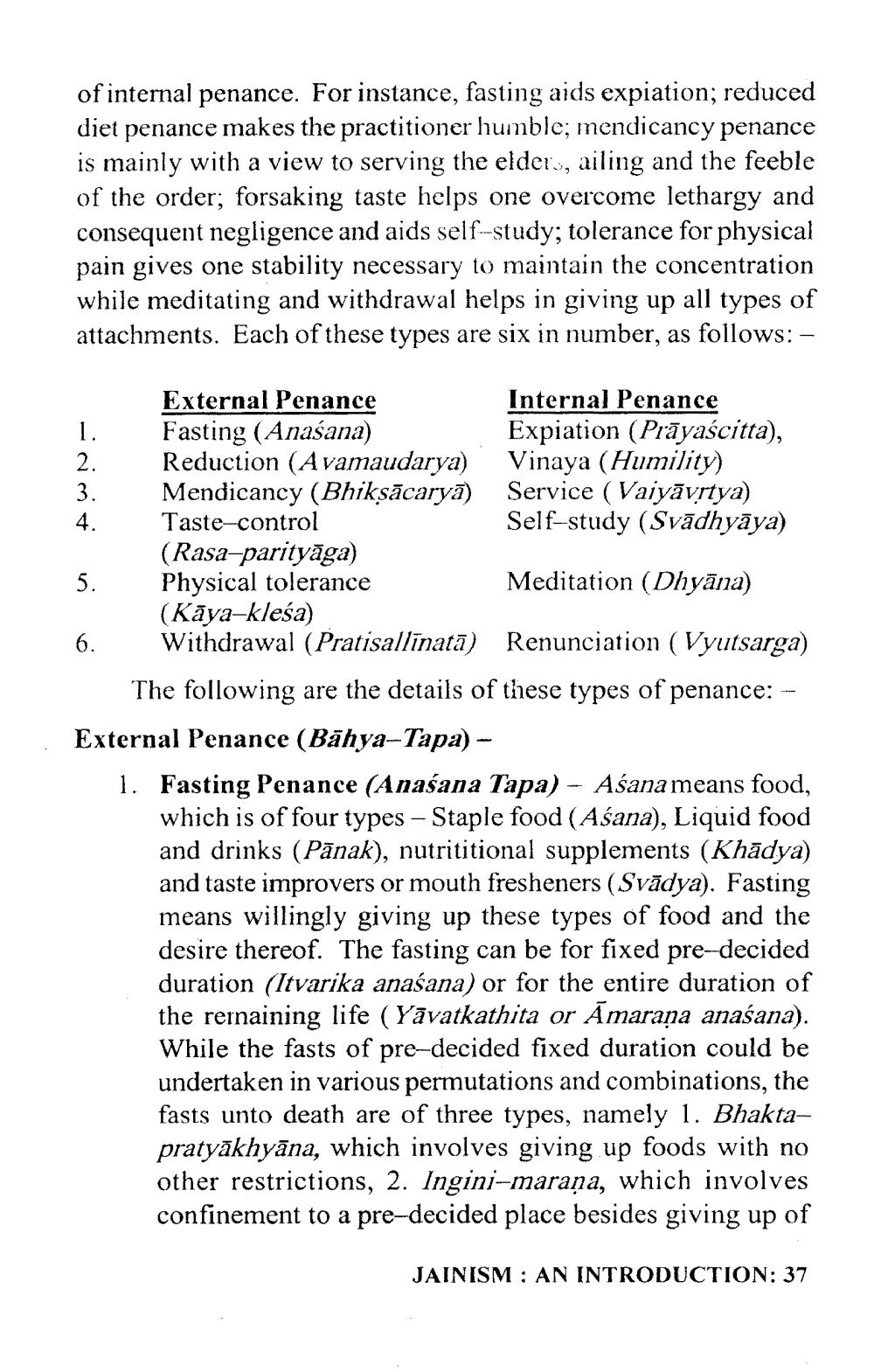________________
of internal penance. For instance, fasting aids expiation; reduced diet penance makes the practitioner humble; mendicancy penance is mainly with a view to serving the elders, ailing and the feeble of the order; forsaking taste helps one overcome lethargy and consequent negligence and aids self-study; tolerance for physical pain gives one stability necessary to maintain the concentration while meditating and withdrawal helps in giving up all types of attachments. Each of these types are six in number, as follows: –
un AWN
6
External Penance
Internal Penance Fasting (Anaśana)
Expiation (Prāyaścitta), Reduction (Avamaudarya) Vinaya (Humility) Mendicancy (Bhiksācaryā) Service (Vaiyāvrtya) Taste-control
Self-study (Svādhyāya) (Rasa-parityāga) Physical tolerance
Meditation (Dhyāna) (Kaya-klesa)
Withdrawal (Pratisallīnata) Renunciation (Vyutsarga)
The following are the details of these types of penance: - External Penance (Bāhya-Tapa) - 1. Fasting Penance (Anaśana Tapa) - Aśana means food,
which is of four types – Staple food (Aśana), Liquid food and drinks (Pānak), nutrititional supplements (Khādya) and taste improvers or mouth fresheners (Svădya). Fasting means willingly giving up these types of food and the desire thereof. The fasting can be for fixed pre-decided duration (Itvarika anaśana) or for the entire duration of the rernaining life (Yāvatkathita or Amarana anaśana). While the fasts of pre-decided fixed duration could be undertaken in various permutations and combinations, the fasts unto death are of three types, namely 1. Bhaktapratyākhyāna, which involves giving up foods with no other restrictions, 2. Ingini-maraņa, which involves confinement to a pre-decided place besides giving up of
JAINISM : AN INTRODUCTION: 37




